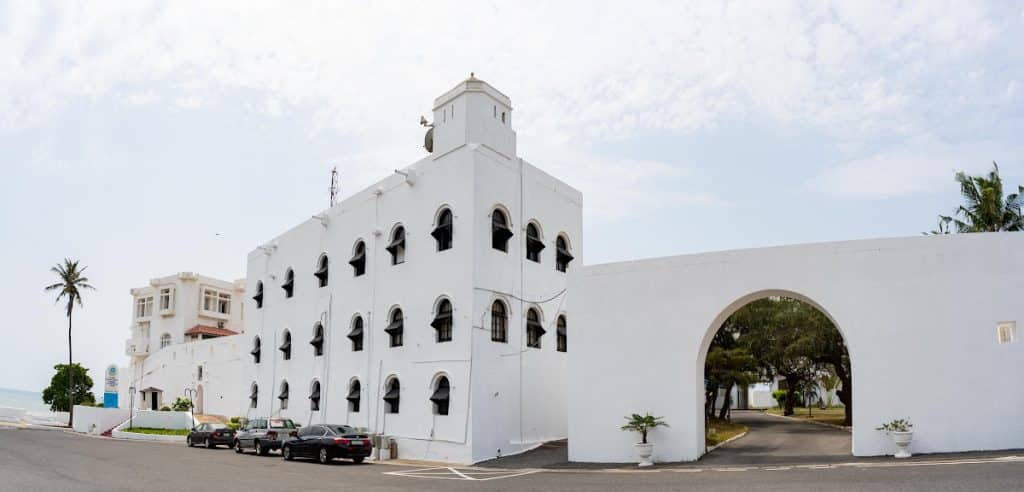The origins of the Osu Castle date back to the 1660s when it was initially constructed by Denmark-Norway. Over time, the fort changed hands between Denmark-Norway, Portugal, the Akwamu people, Britain, and eventually post-independence Ghana. During Denmark-Norway’s control, it served as the capital of the Danish Gold Coast and played a significant role in the transatlantic slave trade by holding and dispatching enslaved individuals.
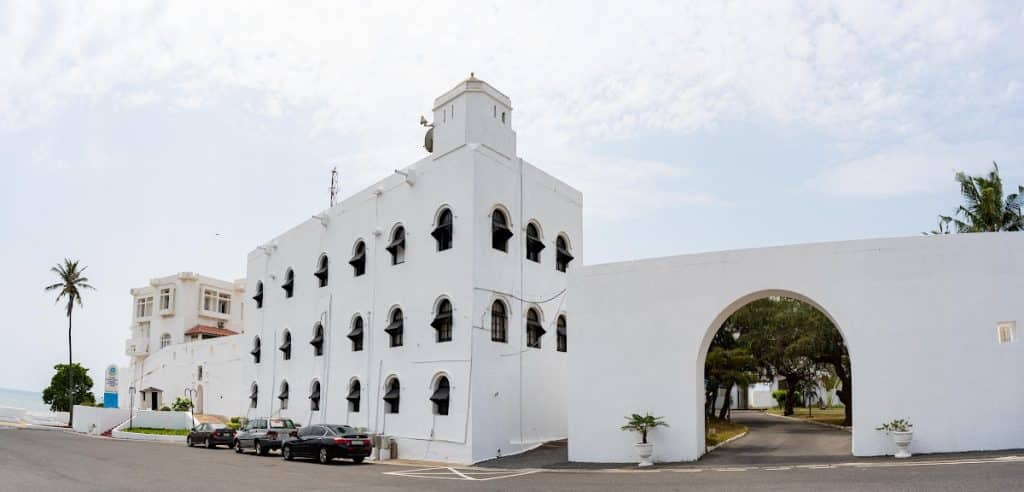
Osu Castle, also known as Fort Christiansborg or the Castle, is a historic fortress situated in Osu, Ghana, along the coast of the Gulf of Guinea in Africa.
In 1902, Osu Castle became the seat of government in Ghana, although this has since been relocated to the Golden Jubilee House. The castle holds great historical significance as it testifies to European colonial influence in West Africa and the devastating impact of the Atlantic slave trade. In recognition of its historical value, the castle was inscribed on the UNESCO World Heritage List in 1979, along with several other castles and forts in Ghana.
The area where Osu Castle is situated was initially occupied by the Portuguese in 1550. However, Portuguese influence diminished in the 17th century. The region came under Swedish control in the 1650s through the efforts of German trader Heinrich Carloff. In 1652, Carloff obtained permission from the King of Accra to build a small fortified lodge. Control of the area shifted to the Netherlands in 1660 but was soon lost to Denmark-Norway. During this time, Carloff, now representing Denmark-Norway, returned to Africa and successfully conquered the forts he had previously established, including Osu. Initially used for trading gold and ivory, the castle’s focus shifted to the slave trade under Danish control.
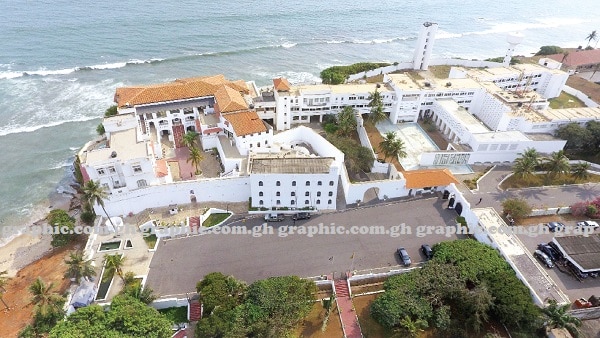
Adjacent to Osu Castle were two other forts—Fort Crèvecœur controlled by the Dutch and Fort James controlled by the British. As the settlement at Osu was too small to compete with the neighboring forts, Denmark-Norway purchased additional land and expanded the building, renaming it Fort Christiansborg after King Christian V of Denmark. It should be noted that this fort should not be confused with the royal palace in Copenhagen, which shares a similar name. Denmark-Norway occupied the fort for most of the next two centuries, with some interruptions. For a significant portion of that time, it served as the capital of the Danish Gold Coast.
In 1679 or 1680, a mutiny orchestrated by the Greek assistant commander led to the murder of the fort’s commander. Shortly thereafter, a Portuguese ship under the command of Julião de Campos Barreto visited the fort and agreed to purchase it. The fort was then renamed Fort São Francisco Xavier after the Catholic missionary Francis Xavier. However, the Portuguese abandoned the fort on August 29, 1682, following a mutiny within their garrison and the realization that they could not compete with other powers on the Gold Coast. Denmark-Norway repurchased the fort from the Portuguese in February 1683. In 1685, Fort Christiansborg became the capital of the Danish Gold Coast, replacing Fort Frederiksborg.
In 1693, the Akwamu ethnic group infiltrated the fort disguised as merchants and overpowered the occupants, who were weakened by death and disease. Assameni, the Akwamu leader, occupied the fort for a year and engaged in trade with merchants from various nations. In 1694, Assameni sold the fort back to Denmark-Norway for 50 marks of gold, but the Akwamu retained possession of the keys, which are still in their possession to this day. The fort faced challenging times in the early 18th century and was reported
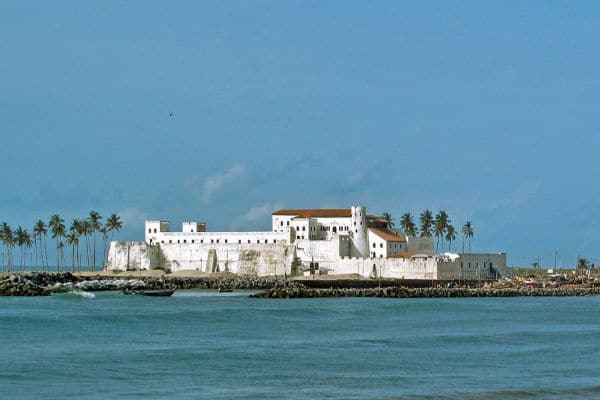
to be in disrepair by the English in 1722. However, extensions and structural improvements were made later in the century, with further expansions in 1824. These additions included additional storage rooms, garrison quarters, platforms, bastions, and houses, resulting in the castle being four times its original size. In the 1770s, the Danes at Osu Castle found themselves embroiled in a conflict with Dutch-controlled Accra.
In 1850, the British acquired all of Denmark’s possessions on the Gold Coast, including Fort Christiansborg, for £10,000. Denmark had been considering selling these outposts for some time, as they were costly to maintain and no longer provided significant benefits. The British, motivated by their commitment to ending illegal slave trading and preventing the strengthening of French or Belgian influence in the region, took over the fort. However, an earthquake in 1862 destroyed most of the upper floors, which were subsequently rebuilt using wood.
During the late 19th century, the castle served as the seat of the colonial government. However, it was temporarily abandoned by the British colonial powers from 1890 to 1901. During this period, it was utilized as a constabulary mess and later converted into a psychiatric asylum. The castle regained its status as the seat of government in 1902.
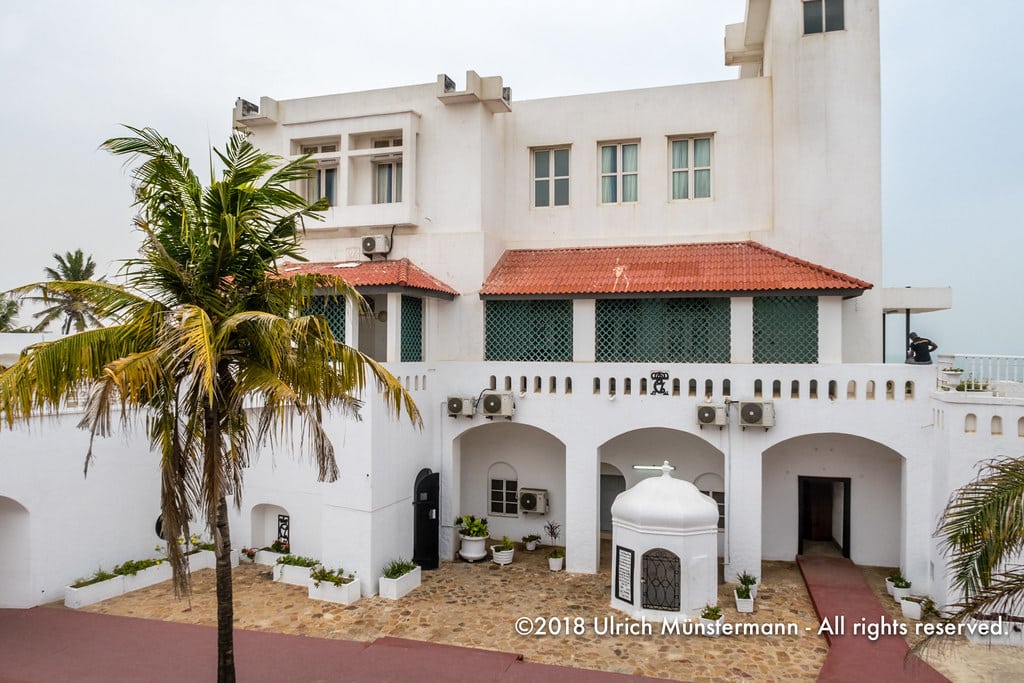
In 1950, the wooden upper floors were reconstructed according to the original Danish plans. When Ghana gained independence in 1957, with Queen Elizabeth II as the head of state, the fort became Government House and served as the residence of the Governor-General. Following Ghana’s transition to a republic in 1960, it became the official residence of Ghana’s first president, Kwame Nkrumah.
In 2005, a debate arose regarding whether Osu Castle should continue to serve as the seat of government. President John Kufuor argued against using the castle due to its historical association with slavery and its inadequate facilities. Members of the National Democratic Congress, however, contended that the $50 million required to build a new presidential palace could be better allocated elsewhere.
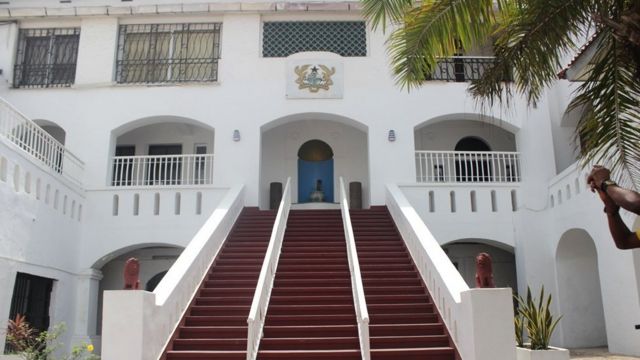
Today, Osu Castle stands as a symbol of Ghana’s complex history, showcasing the enduring remnants of European colonialism and the painful legacy of the transatlantic slave trade. While its role as the seat of government has shifted, the castle remains an important historical site and a reminder of the country’s journey towards independence and self-determination.


